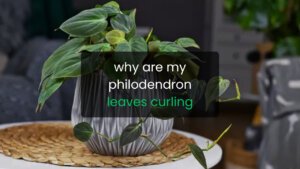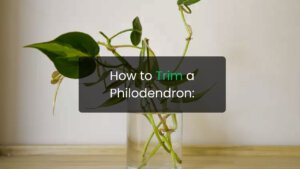Philodendrons are among the most popular houseplants, loved for their lush green leaves, easy growth, and air-purifying qualities. Whether you’re a beginner or an experienced plant lover, growing philodendron is simple once you understand its needs. This guide covers everything you need to know about how to grow philodendron and keep it thriving all year round.
Choosing the Right Philodendron
There are two main types of philodendrons: vining philodendrons and non-vining (self-heading) philodendrons.
- Vining varieties, like Philodendron hederaceum or Philodendron brasil, grow long trailing stems and can climb or hang beautifully.
- Self-heading types, like Philodendron selloum or Philodendron birkin, grow upright and form a bushy shape.
Choose a type that suits your space and decor style. Vining varieties are perfect for hanging baskets or shelves, while self-heading types make great floor plants.
Light Requirements
Philodendrons prefer bright, indirect light. Too much direct sunlight can scorch their leaves, while too little light slows their growth and causes leggy stems. If you’re growing indoors, place your philodendron near a window with filtered light.
Artificial grow lights can also work well for homes with limited sunlight.
Watering Needs
Philodendrons like their soil to be slightly moist but not soggy. Overwatering can cause root rot, one of the most common problems with this plant. Water your philodendron when the top inch of soil feels dry to the touch.
Always ensure the pot has drainage holes to allow excess water to escape. In winter, reduce watering frequency as the plant’s growth slows.
Ideal Soil and Potting Mix
A well-draining soil mix is essential for healthy growth. You can use a mix of:
- Peat moss or coco coir
- Perlite or coarse sand
- A bit of compost for nutrients
This mix keeps the roots aerated and prevents waterlogging. Repot your philodendron every 1 to 2 years to refresh the soil and give it room to grow.
Temperature and Humidity
Philodendrons thrive in temperatures between 65°F to 80°F (18°C to 27°C). Avoid placing them near cold drafts or heating vents.
They also love moderate to high humidity. If your indoor air is dry, mist the leaves occasionally or use a humidifier to maintain healthy moisture levels.
Fertilizing for Better Growth
Feed your philodendron with a balanced liquid fertilizer every 4 to 6 weeks during the growing season (spring and summer). Reduce feeding in fall and winter when the plant’s growth naturally slows.
Over-fertilizing can burn the roots, so always follow the recommended dosage on the fertilizer label.
How to Propagate Philodendron
Propagation is an easy way to grow more philodendrons. The most common method is stem cuttings:
- Cut a healthy stem just below a node (where a leaf joins the stem).
- Place the cutting in water or moist soil.
- Keep it in a warm spot with indirect light.
- Roots will develop in a few weeks, and then you can transfer it to a pot.
This method works best for vining varieties, but some self-heading types can also be propagated through division.
Common Problems and Solutions
- Yellow Leaves: Usually caused by overwatering. Let the soil dry out before watering again.
- Brown Tips: Often due to low humidity or underwatering. Mist the plant regularly.
- Leggy Growth: Not enough light. Move your philodendron to a brighter location.
Benefits of Growing Philodendron
Aside from its beauty, philodendron is known for improving indoor air quality by filtering out toxins like formaldehyde. It’s also low-maintenance and can adapt to various environments, making it ideal for homes, offices, and apartments.
FAQs
Can philodendron grow in water permanently?
Yes, philodendrons can grow in water for months, but for long-term health, transferring them to soil provides better nutrition and stability.
How fast does a philodendron grow?
Philodendrons grow moderately fast, especially in bright, indirect light and warm, humid conditions. Some varieties can grow several feet in a year.
Should I prune my philodendron?
Yes, pruning helps manage shape and encourages fuller growth. Trim any yellow or dead leaves regularly.
Can I keep philodendron outdoors?
Philodendrons can grow outdoors in shaded areas if temperatures stay above 55°F (13°C). Avoid direct sunlight and cold winds.
Is philodendron toxic to pets?
Yes, philodendron contains calcium oxalate crystals, which can be toxic if ingested by pets or children. Keep it out of their reach.
Final Thoughts
Growing a philodendron is one of the easiest and most rewarding ways to bring greenery into your space. With the right light, watering routine, and a little care, your philodendron will thrive and continue to enhance your home with its tropical charm for years to come.





